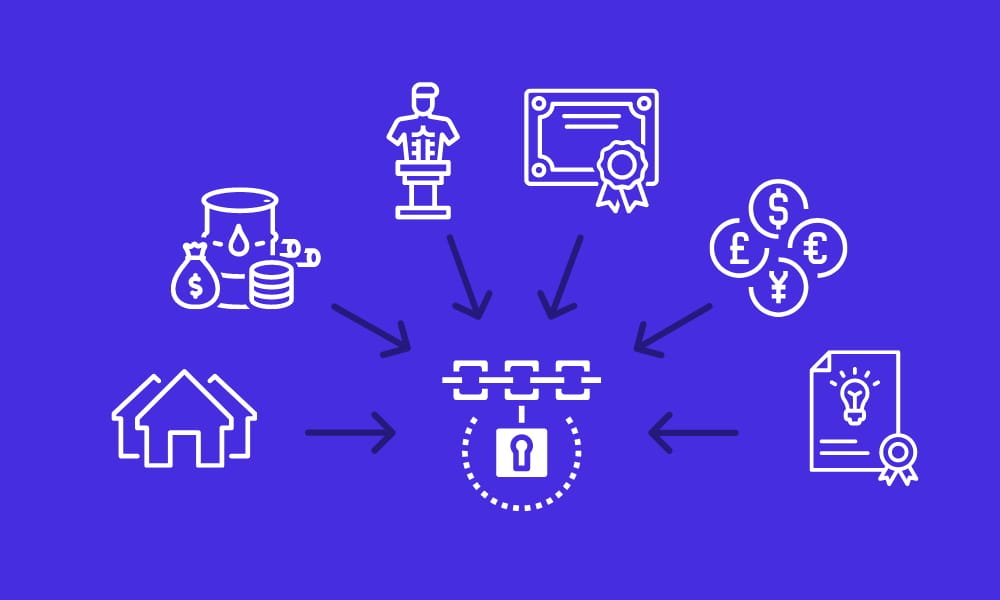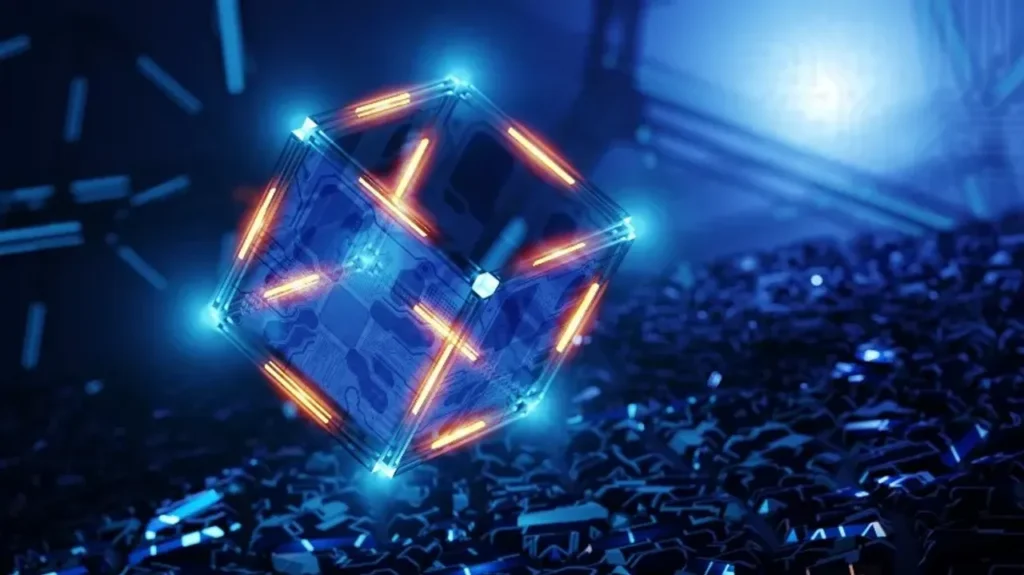The digital landscape stands at the precipice of a revolutionary transformation as quantum computing technology rapidly advances toward practical implementation. While this quantum revolution promises unprecedented computational capabilities, it simultaneously poses an existential threat to the cryptographic foundations that secure our current Web3 ecosystem. The question isn’t whether quantum computers will emerge—it’s whether blockchain networks and decentralized applications will survive their arrival intact.
The Quantum Threat: A Ticking Clock for Blockchain Security
The quantum computing threat to Web3 is no longer a distant science fiction scenario but an imminent reality that demands urgent attention. Recent research from the University of Sussex has revealed alarming projections about the potential of quantum computing to compromise blockchain security. According to their findings, a quantum computer equipped with 1.9 billion qubits could theoretically crack Bitcoin’s encryption safeguards within just ten minutes, fundamentally undermining the security assumptions that underpin the entire cryptocurrency ecosystem.
This threat extends far beyond Bitcoin alone. The entire Web3 infrastructure, including Ethereum, decentralized finance protocols, and countless blockchain applications, relies on traditional public key cryptography for security. These cryptographic systems, which have protected digital assets worth hundreds of billions of dollars, could become obsolete overnight when sufficiently powerful quantum computers emerge. The implications are staggering: investor confidence could collapse, digital assets could become vulnerable to theft, and the trust that forms the bedrock of Web3 ecosystems could erode completely.
BlackRock, the world’s largest asset manager, has recently issued warnings about the potential of quantum computing to “undermine the viability” of cryptographic algorithms used not only in digital assets but across the global technology stack. This acknowledgment from a significant financial institution underscores the seriousness of the quantum threat and the urgent need for proactive solutions.
Current Web3 Vulnerabilities: The Cryptographic Foundation at Risk
Today’s blockchain networks heavily rely on cryptographic primitives that quantum computers could potentially break. Digital signatures, hash functions, and public key encryption schemes that currently secure transactions, smart contracts, and user identities would become trivial for quantum adversaries to compromise. The security model that assumes these cryptographic operations are computationally infeasible to reverse would collapse entirely.

The vulnerability extends to multiple layers of blockchain architecture. Wallet security, transaction validation, consensus mechanisms, and innovative contract execution all rely on cryptographic assumptions that quantum computing would invalidate. When quantum computers achieve sufficient scale and stability, they could potentially execute 51% attacks, manipulate transaction data, compromise user authentication systems, and decrypt sensitive information stored on blockchain networks.
Industry experts project that by 2025, up to 10% of global gross domestic product could be stored on blockchains, making the quantum threat not just a technological concern but an economic imperative. The potential for widespread disruption across financial markets, supply chain management, digital identity systems, and countless other blockchain-powered applications creates an urgent timeline for implementing quantum-resistant solutions.
The Quantum Timeline: When Will the Threat Materialize?
Understanding the quantum timeline is crucial for Web3 stakeholders planning their security strategies. Current quantum computers, although impressive in laboratory settings, lack the scale and stability necessary to pose a significant threat to existing cryptographic systems. However, the pace of quantum computing advancement has accelerated dramatically in recent years, with major technology companies and research institutions making significant breakthroughs.
The critical threshold for blockchain security concerns quantum computers capable of running Shor’s algorithm effectively against the cryptographic key sizes used in current blockchain networks. While experts debate the exact timeline, most projections suggest that quantum computers capable of threatening current blockchain security could emerge within the next 10 to 15 years, with some more aggressive estimates suggesting even shorter timeframes.
This timeline creates a unique challenge for the blockchain industry. Unlike traditional software systems that can be updated quickly, blockchain networks face significant coordination challenges when implementing fundamental security changes. Hard forks, consensus mechanism updates, and cryptographic transitions require extensive community coordination and testing, processes that can take years to complete successfully.
Quantum-Resistant Solutions: The Race for Post-Quantum Security
The cryptographic community has been preparing for the quantum era by developing post-quantum cryptographic algorithms designed to resist attacks from both classical and quantum computers. The National Institute of Standards and Technology (NIST) has been leading efforts to standardize quantum-resistant cryptographic algorithms, providing a foundation for securing digital systems against future quantum threats.
These post-quantum algorithms utilize mathematical problems that remain challenging for quantum computers to solve, including lattice-based cryptography, hash-based signatures, and multivariate polynomial equations. However, implementing these algorithms in existing blockchain networks presents significant technical challenges, including increased computational overhead, larger signature sizes, and potential compatibility issues with existing infrastructure.
The transition to quantum-resistant cryptography requires careful planning and execution. Networks must strike a balance between security improvements, performance considerations, user experience factors, and backward compatibility requirements. Early implementation of quantum-resistant solutions provides crucial advantages, allowing networks to test and refine their security measures before quantum threats become practical realities.
Introducing Naoris Protocol: Leading the Quantum-Resistant Revolution
In this landscape of quantum uncertainty and blockchain vulnerability, Naoris Protocol has emerged as a pioneering solution specifically designed to address the quantum threat head-on. As the first quantum-resistant blockchain and cybersecurity mesh architecture, Naoris Protocol represents a fundamental reimagining of how blockchain security should work in the quantum era.
Naoris Protocol recently secured $3 million in strategic funding led by Mason Labs, following an extensive six-month technical due diligence process. This investment includes backing from Frekaz Group, Level One Robotics, and Tradecraft Capital, demonstrating significant institutional confidence in the protocol’s approach to quantum-resistant blockchain security.
The protocol has successfully launched its token sale, with the $NAORIS token becoming available through the Tokensoft platform in May 2025. This milestone represents more than just a fundraising event—it marks the practical availability of quantum-resistant blockchain infrastructure that organizations can implement today rather than waiting for future developments.
Naoris Protocol’s Technical Innovation: Beyond Traditional Security Models
What sets Naoris Protocol apart from conventional blockchain security approaches is its comprehensive integration of post-quantum cryptography at the foundational level. The protocol implements NIST-approved quantum-resistant algorithms through what it calls the “Sub-Zero Layer,” enabling existing EVM (Ethereum Virtual Machine) blockchains to achieve quantum resilience without requiring disruptive hard forks.
This technical approach addresses one of the most significant challenges facing blockchain networks considering quantum-resistant upgrades: the need to maintain compatibility with existing infrastructure while implementing fundamentally different cryptographic systems. Naoris Protocol’s solution allows networks to enhance their quantum resistance without forcing users, developers, or applications to undergo major transitions.
The protocol operates a fully quantum-resistant Layer 1 blockchain secured by its proprietary Proof-of-Security (dPoSec) consensus mechanism. This consensus approach differs from traditional Proof-of-Work or Proof-of-Stake systems by incorporating security validation as a core component of the network’s operation, creating incentives for participants to maintain and verify the network’s quantum-resistant properties.
Advanced Security Features: Post-Quantum Cryptography in Action
Naoris Protocol’s security architecture incorporates multiple layers of post-quantum protection, including Key Encapsulation Mechanism (KEM) and Dilithium signatures, both of which are designed to resist attacks from quantum computers. These cryptographic primitives have undergone extensive analysis and testing by the cryptographic community and represent the current state-of-the-art in quantum-resistant security.
The protocol’s security mesh is powered by post-quantum cryptography and decentralized artificial intelligence, creating a dynamic security environment that can adapt to emerging threats. This combination of quantum-resistant algorithms and intelligent threat detection provides multiple layers of protection against both current and future attack vectors.
Alignment with emerging quantum standards from both the European Union and the United States ensures that Naoris Protocol’s implementation meets regulatory requirements and industry best practices. This compliance framework is particularly important for enterprise and government applications that must adhere to strict security standards and regulatory guidelines.
Real-World Applications: From Enterprise to Web3
Naoris Protocol’s quantum-resistant capabilities extend beyond theoretical blockchain security to practical applications across multiple sectors. The protocol enables enterprises and governments to shift from siloed, centralized cybersecurity approaches to decentralized, quantum-resistant security meshes that can protect digital infrastructure across both Web2 and Web3 environments.

For existing Web3 projects, Naoris Protocol offers a pathway to quantum resistance that doesn’t require abandoning current infrastructure investments. Projects built on Ethereum and other EVM-compatible networks can integrate quantum-resistant security features through Naoris Protocol’s Sub-Zero Layer without disrupting their existing operations or user experiences.
The protocol’s self-validating cybersecurity enforcement capabilities provide verified cyber-status information that extends beyond traditional network perimeters. This approach is particularly valuable in hybrid environments where Web2 and Web3 systems must interact securely, ensuring that quantum-resistant security protections remain effective across different technological paradigms.
The Competitive Advantage: Why Early Adoption Matters
Organizations and networks that implement quantum-resistant security measures before quantum threats become practical gain significant competitive advantages. Early adoption provides time to test and refine quantum-resistant implementations, identify potential compatibility issues, and develop operational expertise with post-quantum cryptographic systems.
Naoris Protocol’s availability today means that forward-thinking organizations don’t need to wait for quantum threats to materialize before implementing protective measures. This proactive approach contrasts sharply with reactive strategies that attempt to address quantum threats only after they become imminent, potentially leaving insufficient time for thorough testing and implementation.
The protocol’s integration capabilities with existing EVM blockchains enable early adopters to enhance their quantum resistance without compromising current functionality or user base. This gradual transition approach reduces implementation risks while building quantum-resistant capabilities that will become increasingly valuable as quantum computing technology advances.
Industry Recognition and Future Outlook
The blockchain industry’s growing awareness of quantum threats has created a heightened demand for practical, quantum-resistant solutions. Naoris Protocol’s successful funding round and token launch demonstrate market confidence in comprehensive approaches to post-quantum blockchain security.
Industry analysts project that quantum-resistant blockchain solutions will become standard requirements rather than optional enhancements as quantum computing technology continues to advance. Organizations that establish quantum-resistant capabilities early will be better positioned to navigate this transition and maintain security advantages over competitors who delay implementation.
The protocol’s focus on compatibility with existing infrastructure addresses one of the primary barriers to the adoption of quantum-resistant systems. By enabling gradual transitions rather than requiring complete system overhauls, Naoris Protocol provides a practical pathway for the blockchain industry to achieve quantum resistance without disrupting existing operations.
Preparing for the Quantum Future: Strategic Considerations
As the quantum era approaches, organizations must strike a balance between the urgency of implementing quantum-resistant security and the practical challenges of transitioning existing systems. Naoris Protocol’s approach addresses these considerations by providing quantum-resistant capabilities that work in tandem with current infrastructure, rather than replacing it entirely.
The protocol’s comprehensive security mesh architecture ensures that quantum resistance extends beyond individual transactions or smart contracts to encompass entire network ecosystems. This holistic approach protects against sophisticated quantum attacks that might target multiple components of blockchain infrastructure simultaneously.
Strategic planning for quantum resistance should consider not only technical implementation challenges but also user experience factors, regulatory compliance requirements, and long-term scalability needs. Naoris Protocol’s alignment with emerging quantum standards and its compatibility with existing Ethereum Virtual Machine (EVM) infrastructure address these broader strategic considerations.
Conclusion
The quantum era represents both an existential threat and a transformative opportunity for the Web3 ecosystem. While quantum computing could potentially undermine current blockchain security models, quantum-resistant solutions like Naoris Protocol demonstrate that the industry can adapt and thrive in the post-quantum world.
Organizations that recognize the quantum threat and implement protective measures today will be best positioned to succeed in the quantum era. Naoris Protocol’s comprehensive approach to quantum-resistant blockchain security provides a practical pathway for achieving this protection without sacrificing current capabilities or user experiences.


